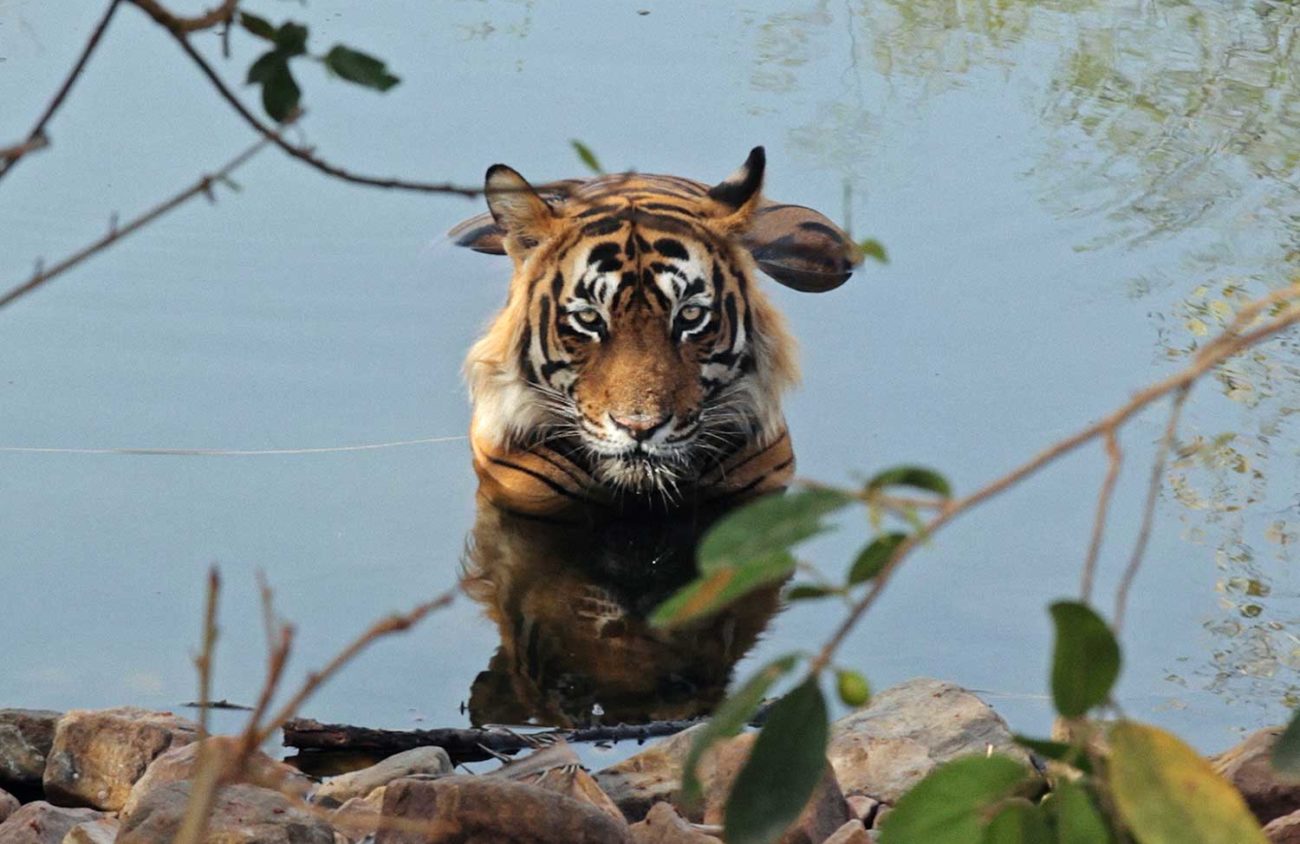Before I talk about director Warren Pereira’s superbly crafted and deeply moving documentary Tiger 24 — which tells the tragic true-life story of a protected tiger in India that may or may not be a man-killer, and the national controversy surrounding that tiger’s fate — I would like to make brief mention of Steven Spielberg’s blockbuster Jaws, about a great white shark that terrorizes a quaint beachside town during one fateful East Coast summer.
In that film, the shark in question — a piece of nature doing exactly what nature does — kills a swimmer who wanders into its territory. Against all evidence and good advice to close down the beaches for a tad, the mayor and city council decide to keep the beaches open, because, you know, tourist season, and money.
Despite the “horror thriller” tag, then, I ask the question: Who, really, is the monster here? Could the film not more honestly be titled City Council?
Pereira, who set out at first merely to film a documentary about tigers living in India’s conservation areas, is far more even-handed than I am about such things, and that’s all to the good. At the center of his film is a horrific incident in 2015 when a park worker entering the “core” of Ranthambhore tiger preserve in northwest India was mauled and killed. It was determined, with incomplete evidence, that the culprit was Ustad, aka T-24, a 600-pound male Bengal tiger whose beauty, stature and dominance led to his designation by some as a “super tiger.”
Ustad was hunted down, tranquilized and relocated to a half-hectare space in a zoo — not to mention separated from his mate, his cubs and the vast territory he ruled in relative seclusion. Cue the controversy: It was argued by many that the tiger, if indeed it attacked, had never attacked outside its territory, and that there was a difference between its being surprised in an invasive “chance encounter” in the wild and a situation where it stalks and kills its prey.
“Now,” Pereira narrates, “the whole country was involved.” The popular “Save Ustad” campaign became a lightning rod for conservation and environmental protection against human incursion, development (tiger preserves encompass only 2 percent of India’s land mass) and good-old bureacratic incompetence and political maneuvering.
It is an incredibly complicated and emotionally divisive story, shot through with political gray areas and multiple competing first-hand accounts, and Pereira handles it all with rare aplomb and a strong sense of forgiveness and grace. His environmental and animal-rights concerns are up front and center, yet he is dispassionate in his appraisal of the hurly-burly and, in fact, remains admirably solutions oriented throughout.
Impressively, the filmmaker strikes a nice balance between the immediate controversy and the entire backstory surrounding it, including India’s history toward the tigers, from the open season outings of Queen Elizabeth II (by the way, fuck big-game hunters, past, present and future) to the progressive wildlife reforms of Prime Minister Indira Gandhi and the creation of the National Tiger Conservation Authority, which is as embattled as this country’s own EPA. In a sense, Tiger 24 plays out as a kind of true-crime drama, and Pereira keeps the suspense flowing without sacrificing hard facts and crucial sub-plots.
Yes, this is a tragic and, at times, gut-wrenching movie. There were moments of profound sadness and heartbreak that had me wondering if I was going to make it through the whole thing (it should be said that Pereira is careful never to yank the emotional chain to make a point, and the gruesome bits that detail the attacks are brief and, if such a thing is possible, tastefully and respectfully done).
That said, Tiger 24 is also a movie full of beautiful and stunning passages, mostly having to do with the filming of Ustad and other tigers, who are so lingeringly and lovingly shot that they become equal players in this drama. The movie is a sumptuous visual feast. As Pereira says, “there’s nothing quite as beautiful, inspirational and important as a tiger in the wild,” and his footage does full honor to that observation.
It was, perhaps, unfair of me to compare a fictional killer shark to a very real tiger, if only because — as the movie makes abundantly clear — the tigers on India’s reserves have a remarkable record of not violating the often porous borders separating them from the attenuated core they’ve been left to inhabit. And yet, the subtext of Pereira’s film is loud and clear: It is up to us — with our continuous expansion, development and outright destruction of the planet’s ecosystems — to strike a balance that will preserve tigers like T-24. Our failure to do so spells infinite loss, not just of tigers but of the world itself.
In this sense, Ustad represents much more than an endangered tiger population, and who is really at the core of this controversy. In other words, we have seen the enemy. “So maybe there is no good guy or bad guy in this T-24 tragedy,” Pereira narrates toward the end of his documentary. “Maybe that’s life. Maybe if you look deep enough, there’s dirt on everyone.”
Join director Warren Pereira in-person for a Q&A and poster signing following a screening of Tiger 24 on Friday and Saturday, August 19 and 20, at the Broadway Metro; times and info at BroadwayMetro.com.
